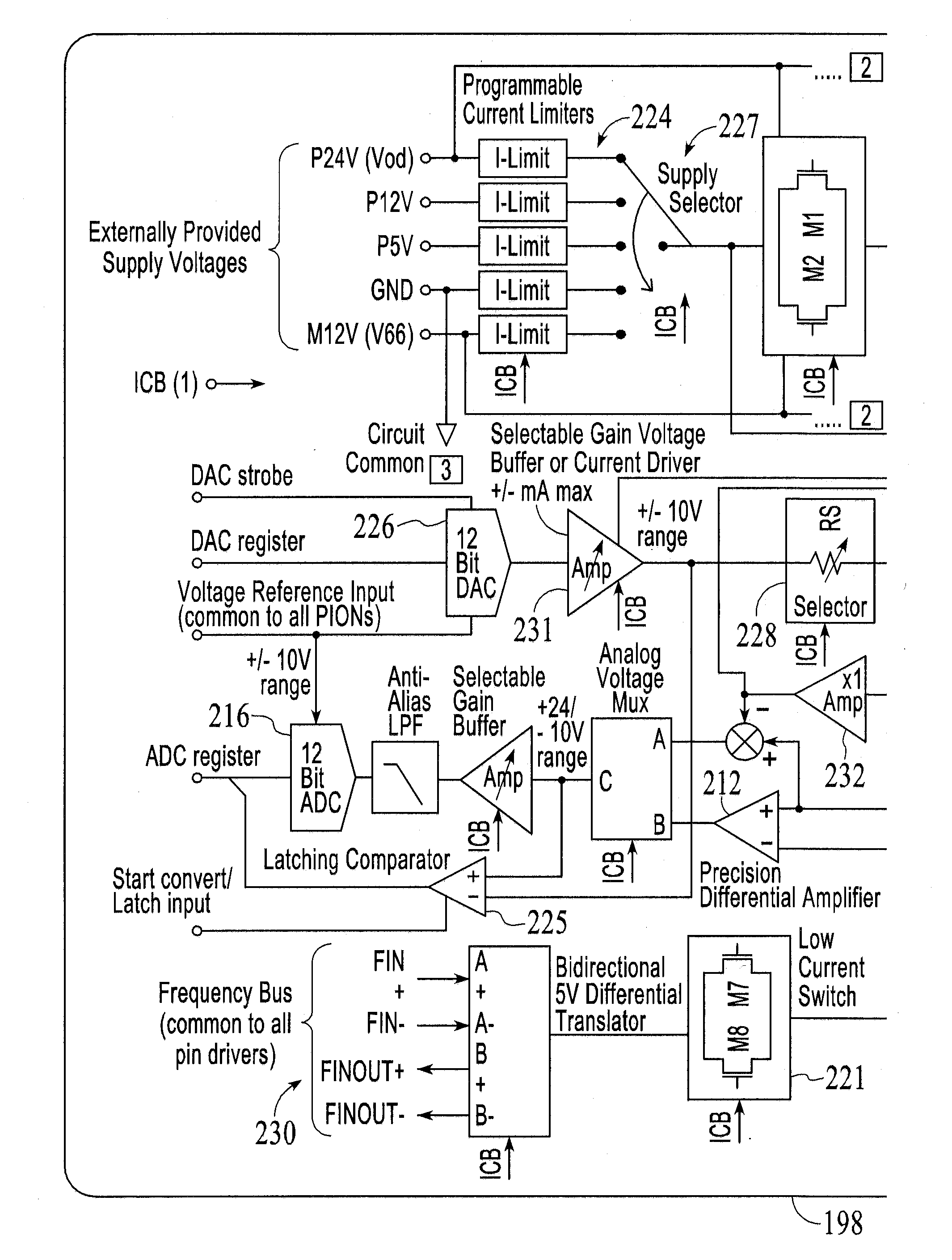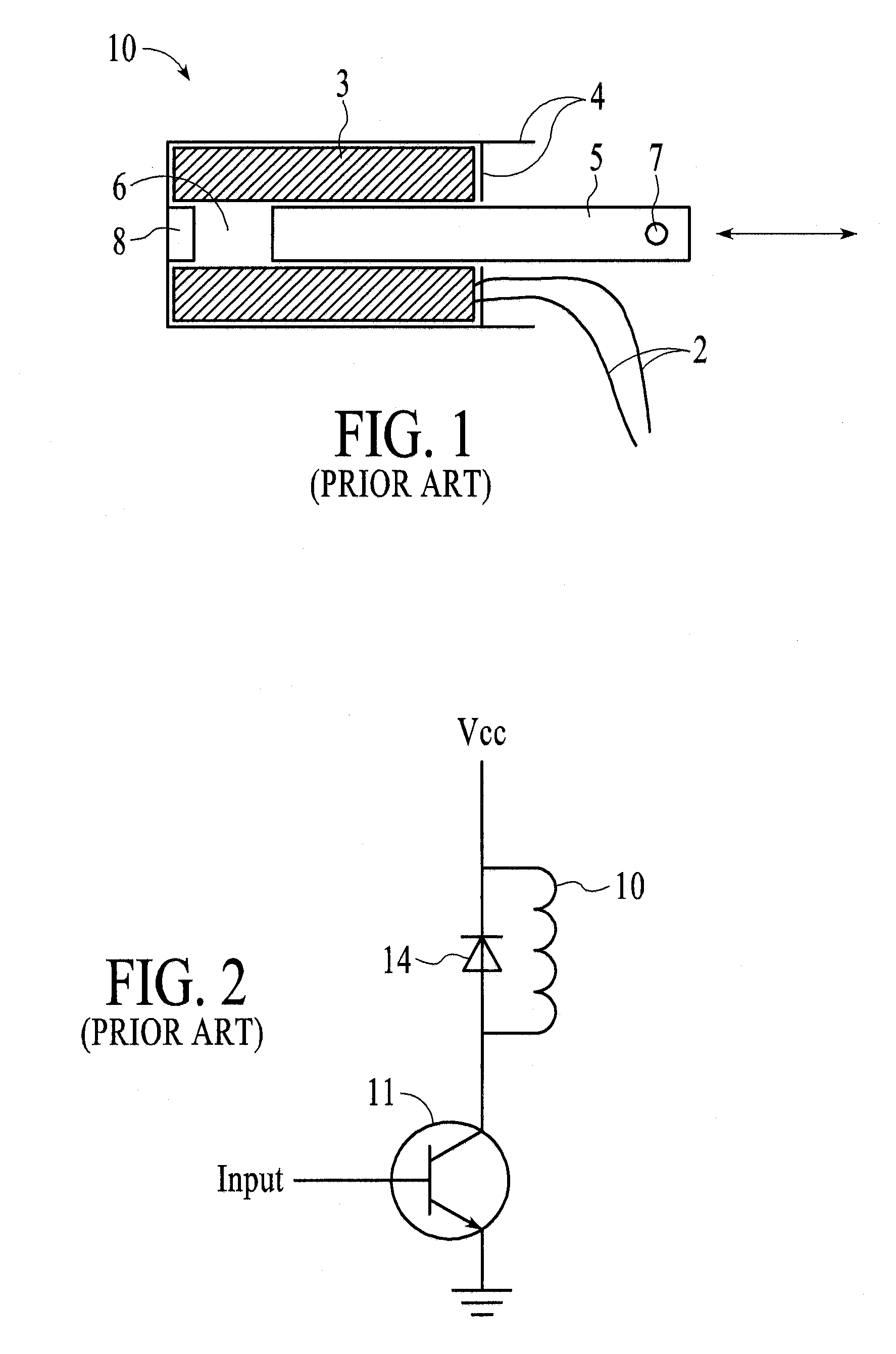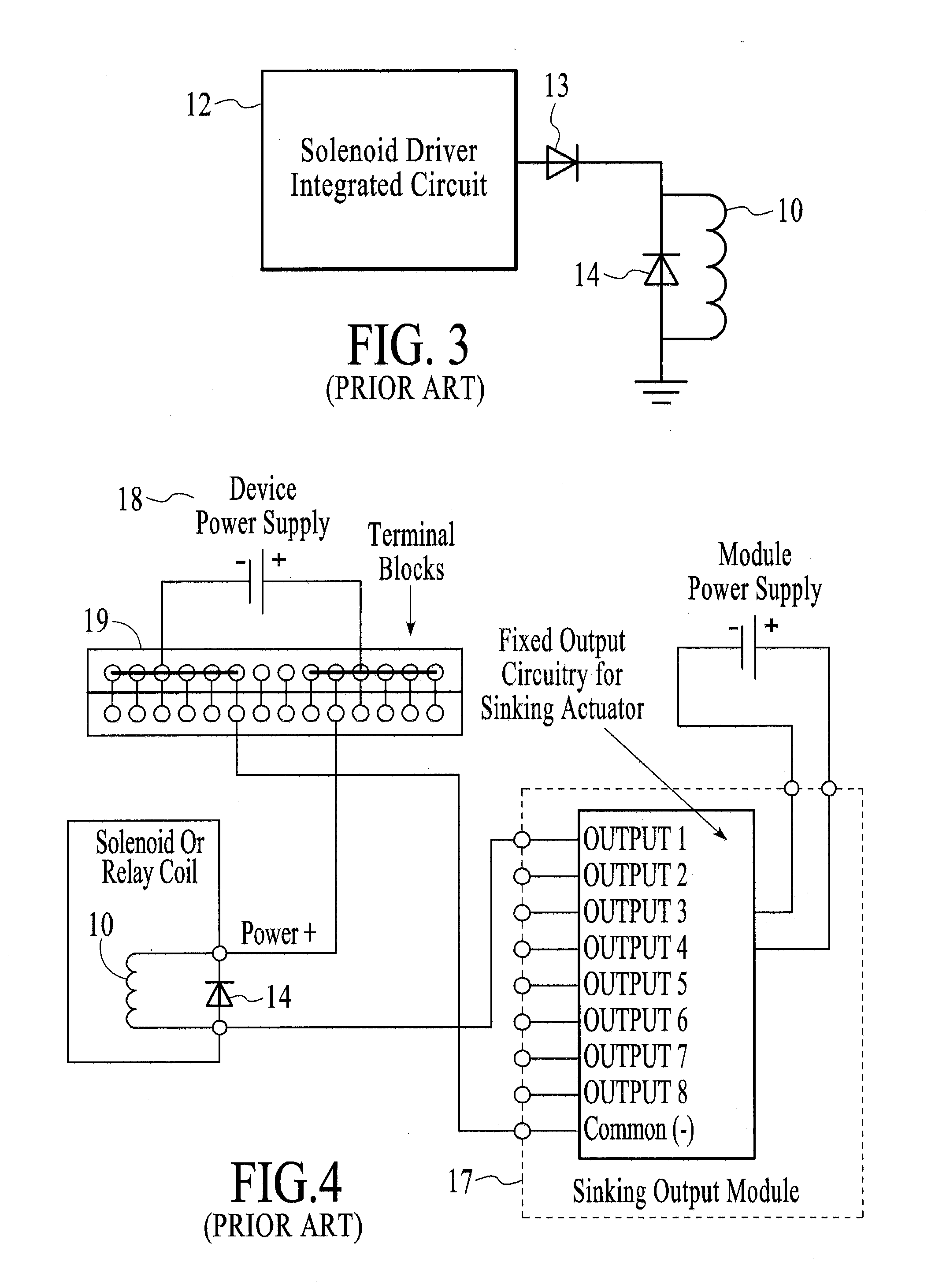Configurable Solenoid Actuation Method and Apparatus
a technology of connectorized apparatus and solenoid, which is applied in the direction of relays, magnets, magnetic bodies, etc., can solve the problems of increasing the electrical resistance of the circuit, increasing the number of additional components, and generating excessive energy consumption and heating in the solenoid coil. , to achieve the effect of preventing unintended opening of the solenoid, reducing the number of additional components, and high efficiency power supplies
- Summary
- Abstract
- Description
- Claims
- Application Information
AI Technical Summary
Benefits of technology
Problems solved by technology
Method used
Image
Examples
Embodiment Construction
[0037]FIG. 6 depicts a functional block diagram of the configurable connectorized input / output module 15 of the present invention. Included inside said module 15 of the preferred embodiment is a microprocessor 80 which is capable of directing any of a plurality of signals to one or more pins 16 which are subsequently to be connected to various sensors and actuators such as solenoid, but by no means limited to solenoids. In particular, said configurable connectorized input / output module 15 contains one or more power supplies 81 which may be routed in the same manner as other of the plurality of signals via switching means 82 such as R5 or R6 and connect to one or more connector pins 16. When a solenoid is connected between two such pins 16, the configurable connectorized input / output module 15 can produce one of a plurality of power levels to said solenoid thereby adjusting the current flowing through the solenoid without the need for PWM.
[0038]The configurable input / output module 15...
PUM
| Property | Measurement | Unit |
|---|---|---|
| power levels | aaaaa | aaaaa |
| power levels | aaaaa | aaaaa |
| activation-level voltage | aaaaa | aaaaa |
Abstract
Description
Claims
Application Information
 Login to View More
Login to View More - R&D
- Intellectual Property
- Life Sciences
- Materials
- Tech Scout
- Unparalleled Data Quality
- Higher Quality Content
- 60% Fewer Hallucinations
Browse by: Latest US Patents, China's latest patents, Technical Efficacy Thesaurus, Application Domain, Technology Topic, Popular Technical Reports.
© 2025 PatSnap. All rights reserved.Legal|Privacy policy|Modern Slavery Act Transparency Statement|Sitemap|About US| Contact US: help@patsnap.com



